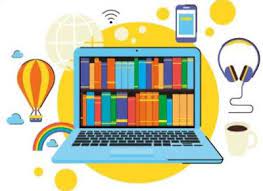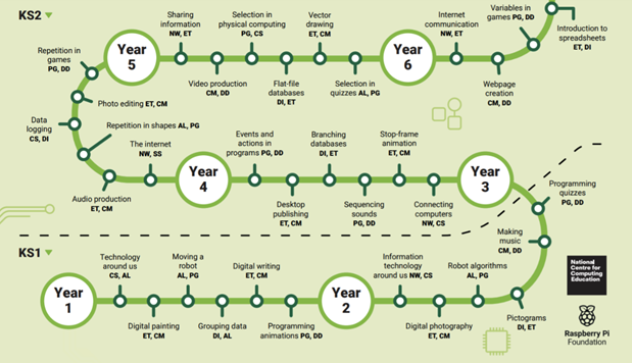Computing

At Lowedges Junior Academy we believe high-quality computing education equips pupils to use computational thinking and creativity to understand and change the world. Computing has deep links with mathematics, science and design and technology, and provides insights into both natural and artificial systems. Computing also ensures that pupils become digitally literate – able to use, and express themselves and develop their ideas through, information and communication technology – at a level suitable for the future workplace and as active participants in a digital world.
How do we teach Computing?
Starting with EYFS, we introduce our pupils to technology in a variety of ways, including continuous provision and small group tasks. Through role play and creative activities, our children are exposed to various technological items, such as telephones, cameras, stereos, and tills.
In addition, we incorporate technology into our curriculum by providing opportunities for our pupils to use laptops to research and answer questions, engage with interactive whiteboards for online games, and utilise resources such as 'Beebots' to further develop their communication, teamwork, and problem-solving skills. We believe that introducing technology in a fun and interactive way not only enhances our pupils’ understanding of the world around them but also prepares them to access the Year 1 curriculum areas with greater confidence.
Using the Teach Computing Curriculum (https://teachcomputing.org/curriculum) most of our learning involves use of commonly encountered software and hardware to develop the pupils' understanding of the key concepts of computer science and become safe, responsible, competent and confident users of ICT. The teaching involves a variety of modules which fit within 4 strands.
- Programming
- Data handling
- Computer systems and networks
- Creating media
These are taught and built upon each academic year to develop understanding and skills in line with age-related expectations.

You will likely be familiar with most of the software used in school with the exception of Scratch. Scratch is a child-friendly programming package which enables pupils to create, develop, debug and test a code to make a character perform and interact on screen. This is generally used throughout school to create simple computer games which develop understanding of sequence, selection, logic and algorithms. This software can be accessed at home for free (https://scratch.mit.edu/).
Through diligent teaching and learning all pupils will make good progress from their own starting points. They will develop a varied range of skills and knowledge that prepares them for the real world as well as ensuring they are ready to access computing successfully in their next phase of education. Computing is assessed through digital outcomes as well as pupil voice.